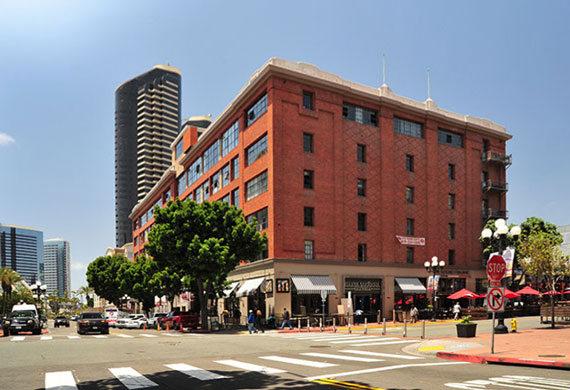|
Gaining Affordable Housing Through Adaptive Reuse
By Bruce Coons
SOHO Executive Director
July/August 2024
As San Diego grapples with actual housing affordability—not the luxury rental units being built today—we/SOHO cannot overstate the importance of adaptive reuse for historic buildings. While new construction is routinely being prioritized, we should consider the steep cost of demolishing existing structures and discarding affordable housing stock into landfills.
Quality construction and materials, authentic character, and meaningful history make old buildings prime candidates for adaptive reuse. There is a lucrative and growing market for these inspired living quarters, creative workspaces, and attractive retail and dining places, which people enthusiastically embrace.
Yet, inexplicably, our city leaders seem to undervalue or ignore the powerful potential of adaptive reuse for housing that has succeeded here and throughout the country. Their stance contradicts the clear benefits. Reuse stabilizes communities, protects naturally affordable units, and boosts the local economy.
For decades, SOHO has promoted the importance and logic of adaptive reuse. Many historic buildings transformed into modern housing are in high demand and, if containing multiple units, have become vibrant communities, with minimal turnover or vacancies. Unaccountably, city leaders continue to overlook this key tool for providing workforce and low-income homes.
San Diego has many fine examples of this, projects that are commercially viable and enrich city life. To name just three downtown historic resources: Church Lofts, Pioneer Warehouse Lofts, and the ballpark's Western Metal Supply Company building are still thriving decades after their conversions.
 Pioneer Warehouse Lofts. Photo by Sandé Lollis |
Adaptively reused historic buildings not only define community identity and character, they embody a crucial strategy for our environmental sustainability and resilience. Unlike new construction, historic buildings and neighborhoods are often inherently green, contributing to larger, ongoing resiliency strategies because old buildings retain the embodied carbon from the original construction energy and resources. This fact significantly reduces greenhouse gas emissions.
Another significant benefit is that adaptive reuse maintains and protects naturally occurring affordable housing (NOAH) units. Rather than being demolished and dumped in landfills, NOAH homes, like bungalow courts and apartment buildings, can be retrofitted, updated, and reused in many creative and novel ways. Interesting and authentic spaces infused with history and offering modern amenities have proven to be highly attractive to individuals, families and businesses large and small.
Adding new living quarters through historic preservation contributes to San Diego's growth, vitality, and equitable development. And converting old buildings also helps stabilize neighborhoods, and broadens ownership opportunities. Reuse projects generate more jobs than new builds.
As the affordable housing crisis rages on, San Diego needs to meet the problem today and plan for the future. Adaptive reuse allows us to build an inclusive future while preserving our cultural legacy, aligning housing justice and heritage conservation. It is a win-win, enabling residents and visitors to enjoy our city’s cultural heritage while we build a sustainable future. This way, adaptive reuse aligns preservation and progress.
BACK to the table of contents
|
2025
2024
2023
2022
2021
2020
2019
2018
2017
2016
2015
|




